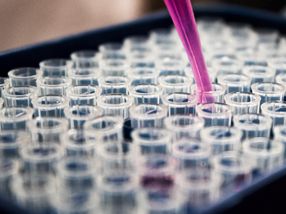New method for making human-based gelatin
Advertisement
Scientists are reporting development of a new approach for producing large quantities of human-derived gelatin that could become a substitute for some of the 300,000 tons of animal-based gelatin produced annually for gelatin-type desserts, marshmallows, candy and innumerable other products. Their study appears in ACS's Journal of Agriculture and food chemistry.
Jinchun Chen and colleagues explain that animal-based gelatin, which is made most often from the bones and skin of cows and pigs, may carry a risk of infectious diseases such as "Mad Cow" disease and could provoke immune system responses in some people. Animal-based gelatin has other draw-backs, with variability from batch to batch, for instance, creating difficulties for manufacturers. Scientists thus have sought alternatives, including development of a human-recombinant gelatin for potential use in drug capsules and other medical applications.
To get around these difficulties, the scientists developed and demonstrated a method where human gelatin genes are inserted into a strain of yeast, which can produce gelatin with controllable features. The researchers are still testing the human-yeast gelatin to see how well it compares to other gelatins in terms of its viscosity and other attributes. Chen and colleagues suggest that their method could be scaled up to produce large amounts of gelatin for commercial use.
Most read news
Other news from the department science

Get the chemical industry in your inbox
By submitting this form you agree that LUMITOS AG will send you the newsletter(s) selected above by email. Your data will not be passed on to third parties. Your data will be stored and processed in accordance with our data protection regulations. LUMITOS may contact you by email for the purpose of advertising or market and opinion surveys. You can revoke your consent at any time without giving reasons to LUMITOS AG, Ernst-Augustin-Str. 2, 12489 Berlin, Germany or by e-mail at revoke@lumitos.com with effect for the future. In addition, each email contains a link to unsubscribe from the corresponding newsletter.






























































